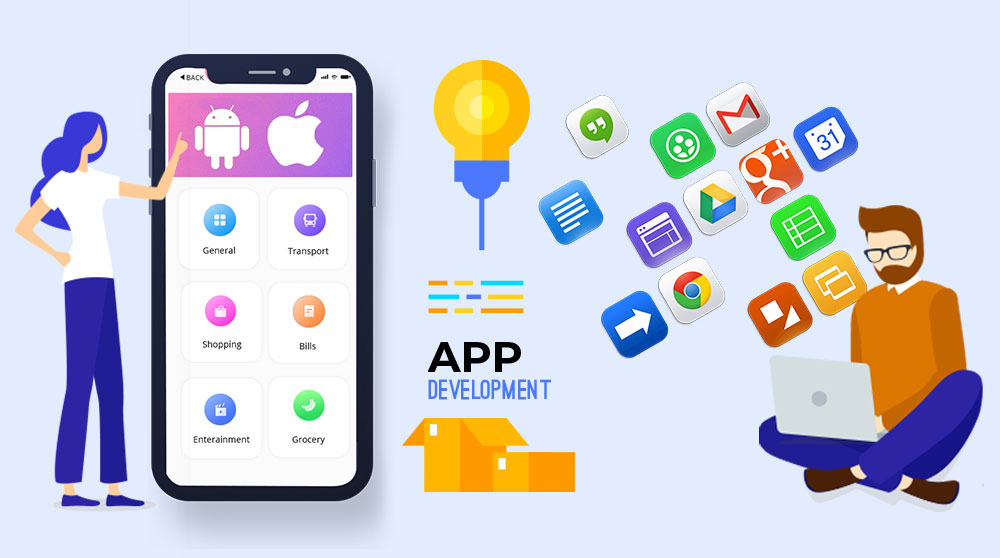In today’s digital age, smartphones have become an integral part of our lives, and mobile applications have transformed the way we interact, shop, entertain, and work. With over 6.92 billion smartphone users worldwide, representing approximately 85% of the global population, and an ever-increasing number of mobile apps available, the demand for mobile app development is at an all-time high.
However, while the potential benefits of developing a mobile app are immense, the process can be daunting, particularly for startups and small businesses with limited budgets. The good news is that with strategic planning, careful decision-making, and the right approach, it’s possible to embark on a budget-friendly mobile app development project without compromising on quality.
Understanding the Landscape
Before diving into the development process, it’s essential to understand the current landscape of mobile app usage and trends. With billions of smartphone users and millions of apps available, competition is fierce. This underscores the importance of developing a unique app that addresses a specific need or problem in the market.
Defining Clear Objectives and Scope
The foundation of any successful mobile app project lies in defining clear objectives and scope. Start by understanding the core purpose of your app – whether it’s to increase sales, improve customer experience, streamline internal processes, or something else entirely. Once you’ve established the main goals, outline the features and functionalities your app will need to achieve these objectives.
For example, if you’re developing an e-commerce app, key features may include product listings, shopping cart functionality, secure payment processing, and user account management. By clearly defining your objectives and scope upfront, you can avoid scope creep and stay focused on delivering a high-quality product within budget constraints.
Prioritizing Features Strategically
While it’s tempting to include a multitude of features in your app, a budget-friendly approach requires careful feature prioritization. Identify the core features that align with your app’s objectives and provide the most value to users. Consider using techniques like the MoSCoW method (Must have, Should have, Could have, Won’t have) to categorize features based on their importance.
For instance, if you’re developing a social networking app, essential features may include user profiles, messaging functionality, and newsfeed updates, while additional features like video calling and location sharing could be considered for future iterations.
Choosing the Right Development Approach
The development approach you choose can significantly impact your project’s budget. There are three main options to consider: native app development, hybrid app development, and progressive web apps (PWAs).
Native apps offer the best performance and user experience but may be more expensive due to the need to develop separate codebases for different platforms (e.g., iOS and Android).
Hybrid apps, built using web technologies like HTML, CSS, and JavaScript, offer a balance between cost and performance by allowing developers to write code once and deploy it across multiple platforms.
PWAs are web-based applications that offer app-like experiences in the browser. While they are cost-effective and easy to maintain, they may have limitations in functionality compared to native apps.
Researching and Selecting the Right Technology Stack
Choosing the right technology stack is crucial for streamlining development and reducing costs. Research and select technologies that are well-suited for your app’s requirements, taking into account factors like ease of integration, scalability, and the availability of skilled developers in your chosen stack.
For example, if you’re developing a real-time messaging app, you may choose technologies like Firebase for backend services and React Native for cross-platform development to ensure seamless integration and optimal performance.
Collaborating with a Reputable Development Partner
Partnering with an experienced app development company can be a game-changer, especially for startups and small businesses with limited resources. Look for a partner that aligns with your vision, has a strong track record of delivering successful projects, and offers flexible engagement models to suit your budget and timeline.
An established development company can help you navigate the complexities of the app development process, from initial ideation and design to final testing and deployment, ensuring that your app meets the highest standards of quality and performance.
Embracing Agile Methodology
Agile methodology promotes iterative development and allows you to adapt to changes more effectively. By breaking down the project into smaller sprints, you can continuously evaluate progress, receive feedback from stakeholders, and make necessary adjustments along the way, all of which can lead to cost savings in the long run.
For example, if you’re developing a fitness tracking app, you may start with basic features like activity tracking and goal setting in the initial sprint, then gradually add more advanced features like workout plans and nutrition tracking in subsequent sprints based on user feedback and market demand.
Testing Rigorously
Thorough testing is essential to ensure that your app functions as intended and is free from critical bugs or issues that could negatively impact the user experience. Conduct comprehensive testing at each stage of development, including unit testing, integration testing, and user acceptance testing, to identify and fix any issues early in the development process.
For example, if you’re developing a navigation app, you’ll want to test various scenarios such as route calculation, turn-by-turn directions, and offline mode to ensure that the app performs reliably under different conditions and environments.
Planning for Scalability
While your initial app may start with a limited user base, it’s essential to plan for scalability from the beginning to accommodate future growth and increased demand. Choose an architecture that allows for easy scaling as your user count and data volume grow over time.
For example, if you’re developing a social media app, you’ll need to design your backend infrastructure to handle a potentially large number of users and interactions, with provisions for horizontal scaling and load balancing to ensure optimal performance under heavy traffic loads.
Optimizing User Onboarding and Experience
A seamless user onboarding process and intuitive user experience are critical for the success of any mobile app. Invest in a user-friendly interface that guides users through the app’s features and functionalities without confusion or frustration, ultimately leading to higher user satisfaction and retention.
For example, if you’re developing a meditation app, you may design a simple onboarding flow that prompts users to select their meditation preferences and customize their experience based on their individual needs and goals, ensuring a personalized and engaging user experience from the start.
Planning for Post-Launch Maintenance
The launch of your app is just the beginning of its lifecycle, and ongoing maintenance and updates are essential to keep it running smoothly and meeting the evolving needs of your users. Allocate a budget for post-launch maintenance, updates, and improvements, and regularly monitor user feedback and app performance to identify areas that require attention.
For example, if you’re developing a finance management app, you may release regular updates to address bug fixes, security vulnerabilities, and new features based on user feedback and changes in financial regulations, ensuring that your app remains relevant and useful over time.
Consult with our mobile app development experts at I8IS Infiniti software solution and find out how we can help you to conceptualize, develop and launch a budget-friendly mobile app, with meticulous planning and cost control.





